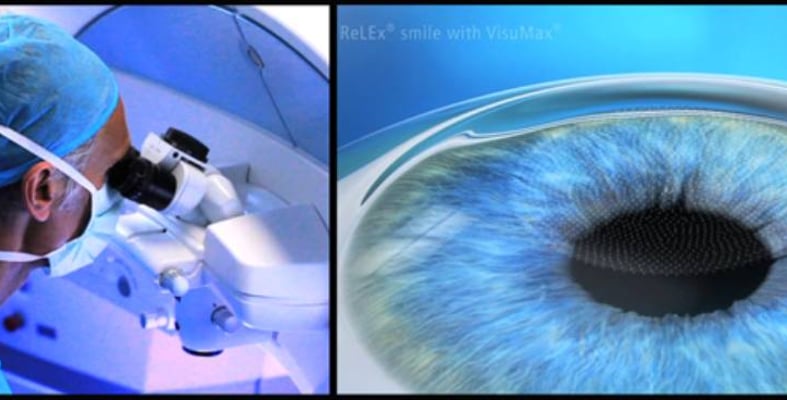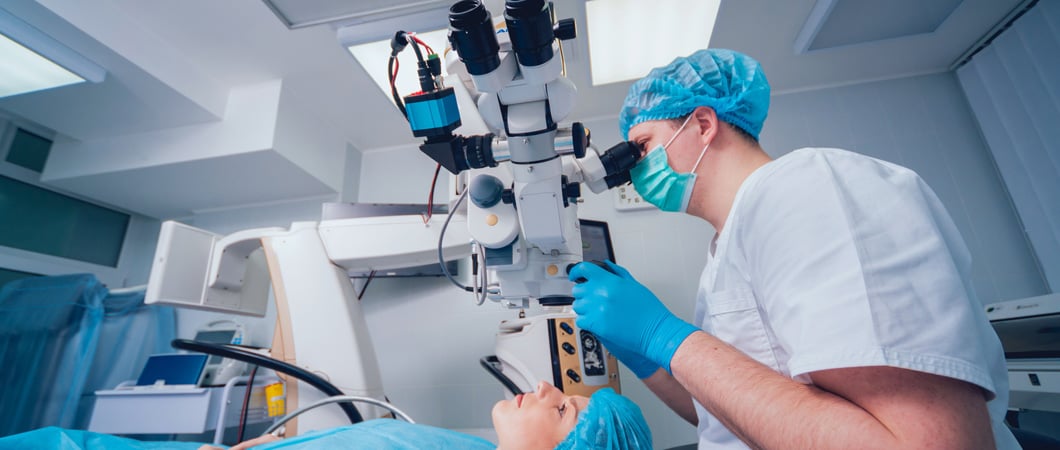SMILE Eye Surgery

Table of contents
- What Are The Advantages Of The SMILE Procedure?
- What are the disadvantages of SMILE procedure?
- Who is an Appropriate Candidate for SMILE?
- Who is not a Good Candidate for SMILE?
- Before SMILE Procedure
- What are the possible risks and side effects after SMILE?
- After SMILE procedure
- What are the expected results after Smile?
SMILE is an acronym that stands for small incision lenticule extraction. SMILE procedure is the latest version of refractive laser eye surgery, and it involves making a very tiny incision at the edge of the cornea using a femtosecond laser, and then redesigning the cornea by adjusting corneal shape at different regions, according to the specified measurements and corneal topography. In the SMILE technique only femtosecond lasers are used. Femtosecond lasers are characterizied by their ability to pass through the surface of the cornea without doing any harm as it can only affect the sub-surface corneal tissue and alter the shape of the cornea by cutting a small lenticular-shape bit of tissue. The surgeon removes this cut lenticular-shaped corneal tissue through the previously made small incision at the edge of the cornea.
As with LASIK and Femto-LASIK procedures, SMILE is considered a minor operation, which does not require general anesthesia or admission to hospital and is performed under a local anesthetic.
After having done with the procedure uneventfully, the patient can be sent home, and their physician usually prescribes some medications and eye drops for them, which include an antibiotic and pain reliever, and/or anti-inflammatory drug.
After patients are discharged, they are followed up in the clinic, and a periodical examination is performed to ensure that there are no complications.
What Are The Advantages Of The SMILE Procedure?
According to studies conducted on patients who have had a SMILE surgery done, the same positive results that were observed with LASIK patients were observed after SMILE procedure in terms of visual acuity in myopia patients, and without the need to open the cornea or create a corneal flap.
SMILE procedure is also characterized by a lesser risk of complication than LASIK procedure, such as dry eyes, as SMILE surgery rarely leads to dry eyes, due to lack of interference with corneal nerves.
What are the disadvantages of SMILE procedure?
One of the most important drawbacks and limitations of SMILE surgery is that it can only be used to treat cases of myopia, unlike LASIK surgery, which also can deal with farsightedness and astigmatism.
SMILE also needs surgeons with special experience and high skills in refractive eye surgery in order to get the best possible results out of the surgery.
Who is an Appropriate Candidate for SMILE?
SMILE eye surgery is not considered appropriate for every patient, as there are some criteria a patient have to match before being considered a good candidate, these criteria are
- The patient is 22 years of age or older.
- The patient’s prescription eye glasses should not have changed in the last year.
- The patient should suffer from a myopia of one to eight degrees without astigmatism, or with a minimal degree of astigmatism.
- The absence of any diseases or problems in the cornea.
Who is not a Good Candidate for SMILE?
SMILE eye surgery can be contraindicated in some patients, especially those who suffer from:
- Rapidly changing refractive problem.
- Autoimmune diseases.
- Corneal diseases or problems.
- High intraocular pressure or glaucoma.
SMILE surgery is also contraindicated in pregnancy or lactation.
Before SMILE Procedure
Preoperatively, the eye surgeon assesses the patient's medical and surgical history to ensure that the patient is a good candidate for SMILE eye surgery, the doctor also performs a complete eye examination, which can involve the following
- Contact lenses: because lenses can temporarily change the shape of the cornea, you should stop wearing contact lenses for at least two weeks before the initial evaluation for SMILE surgery, but some lenses must not be worn for at least 1 months before the initial evaluation for the surgery, please consult with your doctor.
- Corneal examination is a critical step to take accurate readings of corneal measurement, and ensure the accuracy of the first readings, because the procedure depends entirely on the readings of the cornea, its topography, and its thickness. Corneal examination also helps the surgeon make sure that there are no other diseases in the cornea.
- Checking pupils’ size: Patients who have a large pupil are at risk of developing night vision problem and discomfort immediately after the operation, however, the risk is much less with SMILE procedure than it is the case with LASIK.
- Fundus examination is often needed to assess the optic disk, in the event of pathological changes. Fundus examination can also assess the health of the eye lenses.
- Intraocular pressure measurement.

What are the possible risks and side effects after SMILE?
Like any surgery, SMILE is not without the potential risks or complications that both the doctor and the patient must take into account, such as:
- Some glare in the vision, and problems with night vision.
- Some debris after removing the small corneal part,
- Inflammation of the site of the operation or an infection.
- The need to repeat the procedure, where the traditional photorefractive keratectomy (PRK) may be needed.
After SMILE procedure
Right after having SMILE procedure done you cannot drive your car yourself, so you need someone to escort you home, and you may need to rest for a 24 hours after the operation.
You may experience some blurring of vision in the postoperative period. These symptoms improved after a very short time.
You must also adhere to the treatments prescribed by your doctor.
You should avoids washing your eyes frequently.
Natural activities can be continued after two days of the procedure.
What are the expected results after Smile?
SMILE eye surgery is a relatively new procedure, but the primary data accumulated up to the moment has demonstrated its safety and efficacy, and its role as an appropriate alternative to other laser refractive surgeries such as LASIK.
Scientific research has indicated that patients who have undergone SMILE surgery usually have a visual acuity similar to that of LASIK for myopia, without the need to create a corneal flap.
Do you have an inquiry? Contact us - For FREE Consultation.
Ilajak Medical© | A passion for care




tags
Treatment Services
In the Best Medical Centers
Contact Us
Please fill the form below and describe your condition, We will contact you back
- Dental Treatment
- Hair Transplant
- Obesity Surgery
- Vision Correction
- Health Resorts
- Other Medical Services
- No elements found. Consider changing the search query.
- List is empty.

